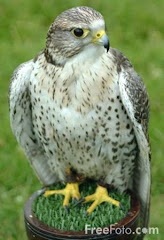مشاهده
مجدد آهوی ختن یا خون آشام در افغانستان پس از گذشت ۶۶ سال
یک
نوع جانوری نادر به نام آهوی ختن یا آهوی مشک یا آهوی خون آشام را که تصور میشد
منقرض شده است در افغانستان مجددا مشاهده گردیده است. گزارش گردیده که پیش از این
تصور میشد که این جانور منقرض شده و آخرین مشاهده این آهو که از سوی یک تیم
دانمارکی صورت گرفته بود به ۶۶ سال قبل (سال ۱۹۴۸ میلادی) باز می گردد.
شهرت
این آهو به دلیل داشتن دندانهای نیش شبیه به خونآشامها در جنس نر است. این
دندانها در جنس و نر در فصل جفتگیری رشد میکنند. آهوهای نر از این دندانها در واقع برای رقابت با سایرین
در فصل جفتگیری استفاده میکند.
حال مجددا پس از گذشت حدود ۶۶ سال از آخرین مشاهده این آهوی زیبا در کشمیر و استان «نورستان» افغانستان مشاهده شده است.
حال مجددا پس از گذشت حدود ۶۶ سال از آخرین مشاهده این آهوی زیبا در کشمیر و استان «نورستان» افغانستان مشاهده شده است.
به دلیل شکار غیرمجاز و نابودی زیستگاه، این جانور از سوی اتحادیه جهانی
حفاظت از طبیعت (IUCN) در فهرست سرخ انواع در حال
انقراض و سپس جزء انواع منقرض شده قرار گرفت.
مشک این آهو بسیار با ارزش است به طوری که ارزش آن معادل قیمت طلا برآورد میشود. در بازار سیاه هر کیلوگرم مشک این آهو ۴۵ هزار دلار ارزش دارد. این جانور نادر همراه با انواع شناخته شده دیگر حیات وحش نظیر پلنگها، جزء میراث طبیعی کشور بحران زده افغانستان به شمار میرود.
مشک این آهو بسیار با ارزش است به طوری که ارزش آن معادل قیمت طلا برآورد میشود. در بازار سیاه هر کیلوگرم مشک این آهو ۴۵ هزار دلار ارزش دارد. این جانور نادر همراه با انواع شناخته شده دیگر حیات وحش نظیر پلنگها، جزء میراث طبیعی کشور بحران زده افغانستان به شمار میرود.
NEW YORK (October 31, 2014) – More than 60 years
after its last confirmed sighting, a strange deer with vampire-like fangs still
persists in the rugged forested slopes of northeast Afghanistan according to a
research team led by the Wildlife Conservation Society (WCS), which confirmed
the species presence during recent surveys.
Known as the
Kashmir musk deer – one of seven similar species found in Asia – the last
scientific sighting in Afghanistan was believed to have been made by a Danish
survey team traversing the region in 1948.
The study was
published in the Oct. 22nd edition of the journal Oryx. Authors include:
Stephane Ostrowski and Peter Zahler of the Wildlife Conservation Society, Haqiq
Rahmani of the University of Leeds, and Jan Mohammad Ali and Rita Ali of
Waygal, Nuristan, Afghanistan.
The species is
categorized as Endangered on the IUCN Red List due to habitat loss and
poaching. Its scent glands are coveted by wildlife traffickers and are
considered more valuable by weight than gold, fetching as much as $45,000/kilo
on the black market. The male’s distinct saber-like tusks are used during the
rutting season to compete with other males.
The survey team
recorded five sightings, including a solitary male in the same area on three
occasions, one female with a juvenile, and one solitary female, which may have
been the same individual without her young. All sightings were in steep rocky
outcrops interspersed with alpine meadows and scattered, dense high bushes of
juniper and rhododendron. According to the team, the musk deer were discrete,
cryptic, difficult to spot, and could not be photographed.
The authors say
that targeted conservation of the species and its habitat are needed for it to
survive in Afghanistan.
Although the
deteriorating security conditions in Nuristan did not allow NGOs to remain in
Nuristan after 2010, the Wildlife Conservation Society maintains contact with
the local people it has trained and will pursue funding to continue ecosystem
research and protection in Nuristan when the situation improves.
“Musk deer are one
of Afghanistan’s living treasures,” said co-author Peter Zahler, WCS Deputy
Director of Asia Programs. “This rare species, along with better known wildlife
such as snow leopards, are the natural heritage of this struggling nation. We
hope that conditions will stabilize soon to allow WCS and local partners to
better evaluate conservation needs of this species.”
http://www.wcs.org/press/press-releases/strange-vampire-deer.aspx



















No comments:
Post a Comment
Please add your comment in the base of posted subject.
Note: Only a member of this blog may post a comment.